7 turbocharged cars where boost and lag are worth … the … wait
A popular maker of alcoholic beverages once had an advertising campaign that suggested good things come to those who wait.
While they were referring to the time it takes to pump a perfect pint of beer, anyone who has ever owned and loved an old turbocharged car might have nodded along sagely, recalling the thrill that comes with sinking your size-ten to the carpet and the building expectation of the swell of power soon to follow.
A notice to readers: Comments on new Hagerty articles have been disabled due to technical issues since July 29th. Don’t worry, the comments are coming back soon, and when they do, we’ll have a contest or giveaway to reward our readers for their patience. Never stop driving! — Jack Baruth
We’re talking, of course, big boost and big lag—characteristics that modern turbo motors have nearly expunged, and while they’re faster and more efficient than ever before, contemporary machines offer their thrills in a very different flavor.
First, however, it’s time for a quick refresher, since an engine that’s off-boost is often confused with one that’s experiencing turbo lag. Turbochargers need a suitable supply of exhaust gas to operate effectively, and on older turbocharged cars in particular, this can require higher engine speeds before enough gas is flowing to spin the turbine, which in turn spins the compressor and generates boost.
This means if you put your foot down at say, 2000 rpm, you might be waiting for a while before the engine develops enough boost to thrust you forwards. This isn’t lag, any more than being below the VTEC changeover in a high-revving Honda is—it just means the engine isn’t operating in its optimal performance window.
Turbo lag, on the other hand, is more like an input delay. Let’s say you’re in the middle of a corner, but doing something like 4500 rpm, enough revs to ordinarily have the turbo spinning away at full throttle.
Exiting the corner, you put your foot down, and for a few seconds, nothing happens—before the boost comes in all at once and propels you down the road. Like off-boost behavior, turbo lag occurs when there’s insufficient gas to spin the turbine; but true turbo lag is provoked by any demand for more throttle, even high in the rev range. Even some modern turbo models aren’t immune.
So with that in mind, here are seven turbocharged classics where the waiting—whether you’re off boost, or simply dealing with turbo lag—is worth it.
BMW 2002 Turbo
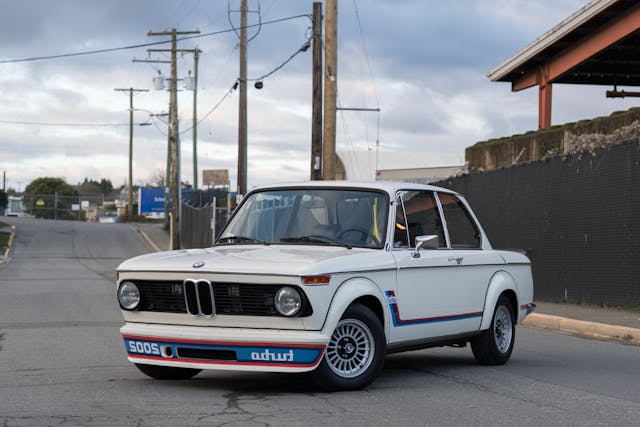
The oil crisis of 1973 is one of the big “what if?” moments in automotive history. Before it, the U.S. muscle-car scene had really been getting into a swing, and all of a sudden performance became neutered. In Japan, Nissan launched its second Skyline GT-R, but sold barely 200. In Germany, BMW introduced a 170-hp, 130-mph, turbocharged version of its 2002, and it instantly became an anachronism.
Like most automotive misfits though, it wasn’t, and still isn’t, without appeal. And like most early turbocharged cars—the 2002 Turbo was BMW’s first production model to feature a turbocharger—it wasn’t without lag, either. Low compression (just 6.9:1) meant low response until the KKK turbine was spinning, and power would often arrive at the 185-section rear tires at inopportune moments, usually as the driver accelerated out of a corner. But those few brave enough to ignore the oil crisis and buy one got one of the decade’s most exciting cars.
Audi RS2

There is a special technique to cornering in Audi’s RS2, and when you get it right it’s far more satisfying than you’d expect for a car with a heavy engine hanging out just behind the grille and a fairly conservative four-wheel drive system directing the power.
First, you must lean hard on the brakes into a corner, keeping as much weight over the front tires as possible to ensure the car follows to your steering input. Then, well before the apex, you open the taps. This won’t upset the balance of the car, because nothing really happens at first, but if you’ve judged it right, the turbo will spool after a couple of seconds and by the time you’re past the apex and relaxing the steering, the full 302 lb-ft will hit all four wheels and send you up the next straight at scarcely believable pace for a 27-year-old car. Drive within this specialized window, and it’s an absolute hoot.
Ferrari F40
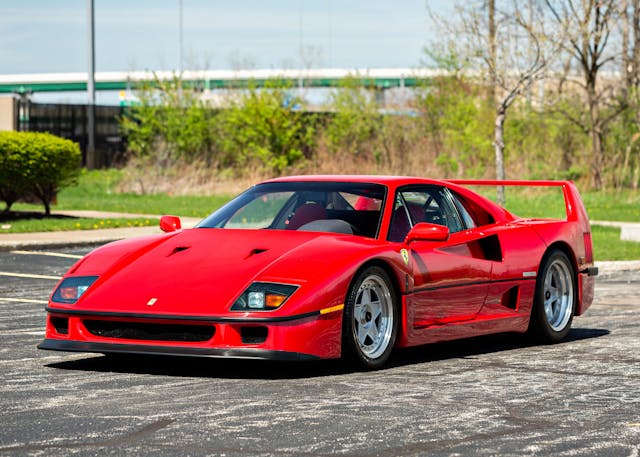
I’ll let Gavin Green speak from experience, but to my mind, short of a Group B rally monster or 1980s Grand Prix car, the Ferrari F40 is probably the ultimate expression of automotive turbocharging. Making a quoted 457 hp from 2.9 liters with the aid of twin turbochargers—and hauling along little more than 2600 pounds—it turns normal turbo characteristics up to undici.
Spawned from the 288 GTO, itself the recipient of a 2.9-liter twin-turbo V-8, the pair of IHI turbos do their best work beyond 4000 rpm. Acceleration below this threshold is hardly slow, but even on a bone-dry road the rampant onset of boost has no trouble at all roasting the 335-section Pirellis in the lower gears. In the wet, as journalist and historic racer Mark Hales once noted, even changing up didn’t help—the wheels would simply spin up at a faster speed.
Ford Escort Cosworth
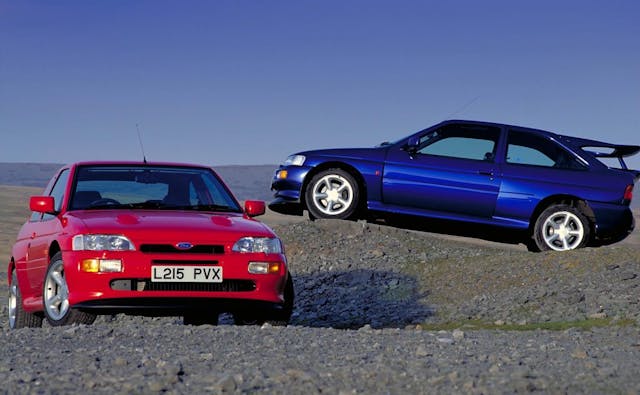
The Ford Escort RS Cosworth—or “Cossie,” as many prefer—is a tale of two turbos. Not in the same car, you understand: Depending on whether your car was one of the first 2500, or the run that followed, you’d either get a sizeable Garrett “T34” turbocharger or a smaller T25.
You can probably guess where this is going. Opt for an earlier car, one with a large turbo really designed to operate at higher compression in a full rally-tuned monster, and the result was barely any power until about 3500 rpm—and then everything at once. Big lag at any engine speed, too, though thankfully all-wheel drive meant you didn’t need to be François Delecour to handle the results. Later cars were, naturally, more tractable. Whichever you drove, the Escort Cosworth was blessed with a sweet-handling chassis that was considerably more finessed than the car’s yobbish looks suggested you’d encounter.
Porsche 930 Turbo
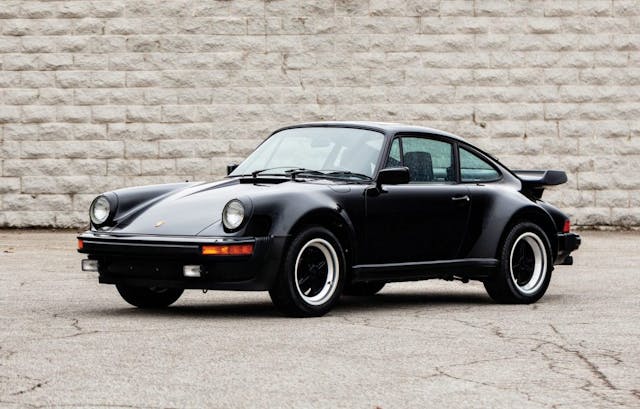
Another mid-1970s entrant onto the turbocharged production car scene was Porsche. The Stuttgart make had been strapping snails to competition cars for a while, and to great success, but homologation requirements for Group 4 and 5 in the 1970s required that it do the same to a few road cars to ensure its RSR was eligible.
The 930 Turbo was the result, initially using a 3-liter flat-six with a single KKK turbo. A chunky rear wing and even chunkier tires were employed to ensure the new 260 hp and 243 lb-ft outputs didn’t get out of hand. They did anyway, giving the 930 a “widowmaker” reputation, while though standing on the gas in a straight line allowed you time to think about your mistakes before boost rushed in and fired you up the road.
Renault 5 Turbo
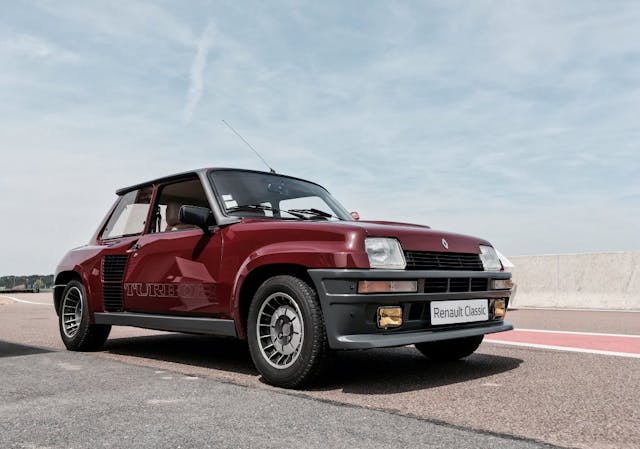
Turbos were big at Renault in the 1980s. Sometimes literally, but mostly figuratively, with an expansive range of boosted models inspired by the brand’s F1 campaign. And rallying, for that matter, which is where the Renault 5 Turbo comes in. Renault put a 1.4-liter turbocharged four-pot in the back of its supermini mainly for rallying, but homologation requirements meant a run of road cars too.
Two generations in fact, named Turbo and then Turbo 2, the latter more subtle visually but no less exciting to drive. Keep the car’s unusual physics in mind and it’s surprisingly benign. Ask for throttle mid-corner, and the traction means you’re more likely to understeer than spin like a top, at least in the dry. The lag here is exciting, offering thrust maybe a few seconds after you demand it. Turbos still feel quick, but as our Sam Smith found out in his Death Eaters series, you can happily drive around it.
Saab 900 Turbo
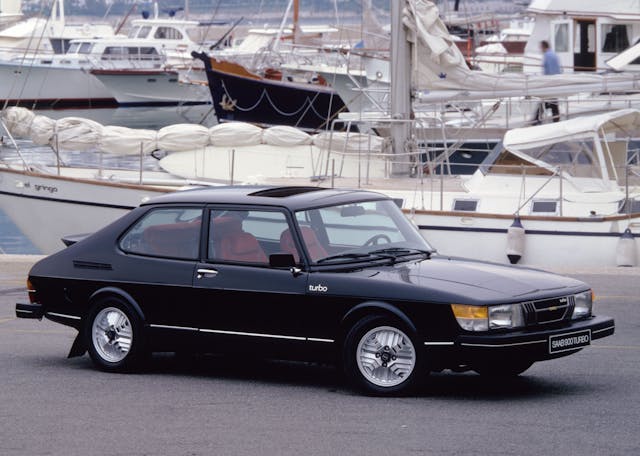
The phrase “it’s not a bug, it’s a feature” is commonly used in the computer programming community to sarcastically highlight an issue so well documented it becomes characteristic of the software. That application that freezes and shuts down every time you try and use a particular function? It’s not a bug, it’s a feature.
With turbocharged Saabs, one common “feature” an owner can expect is hefty torque steer. While Saab’s engines were less laggy than many of their contemporaries, Saab usually preferring smaller, lower-pressure, quick-spooling turbos, their front-wheel drive layouts meant that any time waiting for boost was usually met with a dubious reward when it finally arrived, overwhelming the front tires and dragging the nose of the car this way and that.


